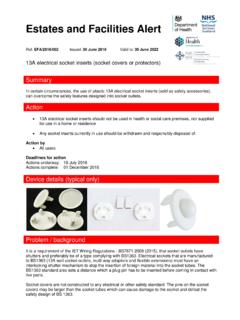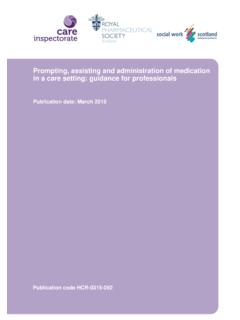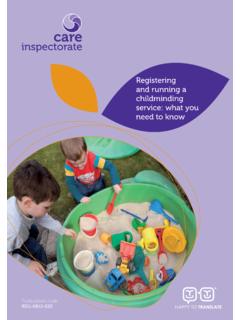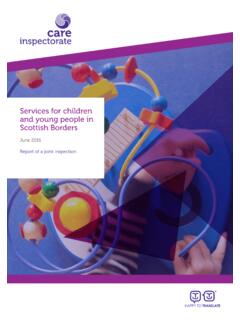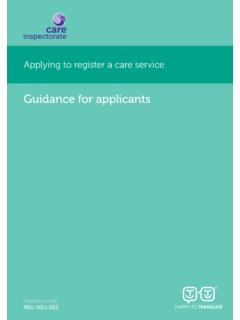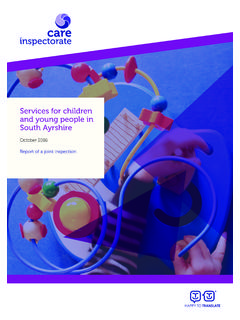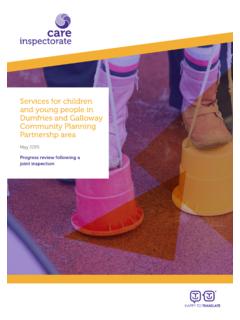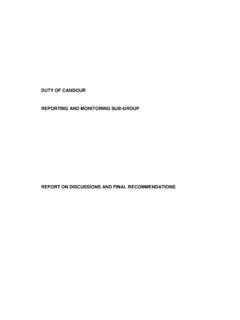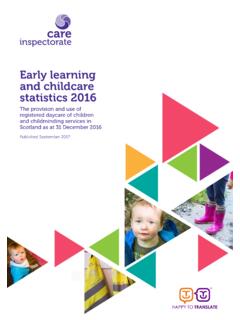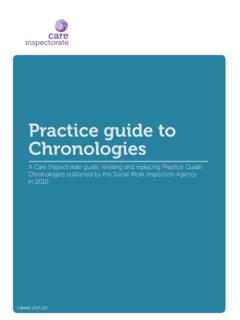Transcription of Tool 13: Bedrail risk assessment - Care Inspectorate
1 tool 13: Bedrail risk assessment This Risk assessment tool is an aide memoire for staff. It should be used in conjunction with Resident Name: the Bedrails Algorithm (see reverse) and local guidance for the safe use of bedrails and falls DOB: prevention. This document does NOT replace the need for clinical judgement. Use algorithm on the reverse of this document when completing this Risk assessment Date Date Date Date Section one Y N N/A Y N N/A Y N N/A Y N N/A. Is the resident at risk of climbing out of bed? Is the resident agitated or confused? Does using bedrails present a higher risk to the residents than falling out of bed? See Algorithm on reverse for guidance Section two Has an alternative to bedrails been considered, ie see bedrails algorithm box 2. Is the resident likely to roll, slip or slide from the bed? Has the resident been consulted regarding the use of bedrails? Does the resident understand the purpose of bedrails?
2 Consider communication difficulties and physical/cognitive condition. Has the decision to use or not use bedrails been discussed with relatives/principal carer? Has the resident/relatives/principal carer been given a copy of the Bedrail information leaflet? If yes, to any of Section two, then bedrails may be appropriate however, consider the following points Section three Is the resident small in stature? Does the resident have an unusually large or small head? When the Bedrail is fitted is there a gap between the lower rail and mattress? Are there large spaces between the lower rail and mattress? Does the Bedrail move away from the side of the mattress when in use? Will the Bedrail fall off the bed? Will any of above create an entrapment hazard? If yes to Section three, bedrails are not appropriate Section four The gap between the Bedrail and the headboard must be less than 60mm or greater than 250mm Has the Bedrail been fitted correctly?
3 Is the Bedrail secure? Is the Bedrail compatible with the bed frame it will be fitted to? Are the bedrails being used in good working order? Does the resident have access to a call bell at all times? If pressure relieving overlay mattress, or air filled mattress in use, are extra height bedrails fitted? If bariatric bed in use is a compatible extra wide mattress fitted? Section five - decision making Has the decision been made to use bedrails? Date: Bedrails checked by: Date: Assessors signature: Bedrails Algorithm Rationale for the completion of the Bedrails Risk assessment Is the resident at risk of falling from bed? NB: for residents at risk of climbing over bedrails, alternatives must be considered. See boxes 2+3. Resident does not understand purpose of Yes bedrails due to . Resident understands purpose of Communication Physical and/or the bedrails difficulties cognitive condition No Resident consents Resident declines Consider: Consider actions in Resident requests Resident not to Bedrail use Bedrail use Referral to appropriate resident's best bedrails.
4 Requesting bedrails speciality eg interest. See boxes Audiology 1, 2 & 3 below. Use of interpreter Bedrails could be Bedrails Bedrails could be Bedrails Use of written or used with caution. inappropriate see Agree plan of care with used with caution. inappropriate see pictorial information See boxes 1 + 3 boxes 2 + 3 next of kin (NOK) (if See boxes 1 + 3 box 3. below appropriate) and below document outcome in care plan 1. If bedrails are used consider: 2. Alternatives to bedrails: 3. Remember to document in care plan: Risk of entrapment and harm to limbs. Move resident to a more observable area to maximise Date and time assessment made. Risk of resident climbing over the top. supervision. Resident & NOK given bedrails information leaflet. The psychological effect of bedrails to the resident. Bed monitor. Rationale for decision made in care plan. Use of air filled mattresses or mattress overlays Ensure bed returned to lowest height after care delivery.
5 Where bedrails are considered appropriate and the require extra height bedrails. Ensure resident needs anticipated eg drinks are accessible, resident has declined their use. Bariatric beds must be used with a compatible regular toileting, call bell to hand etc. Actions taken, including discussion with next of kin. extra wide mattress. Nursing resident on mattress on the floor should be a last Care planning and reviews. resort and safety checks should be made for hot pipes, assessment should be made: trailing wires, electric sockets etc. Moving and handling On admission. risk assessment for staff must be completed. Adapted from a protocol used in NHS Greater If residents condition changes. Glasgow and Clyde. Daily/weekly depending on the situation.
